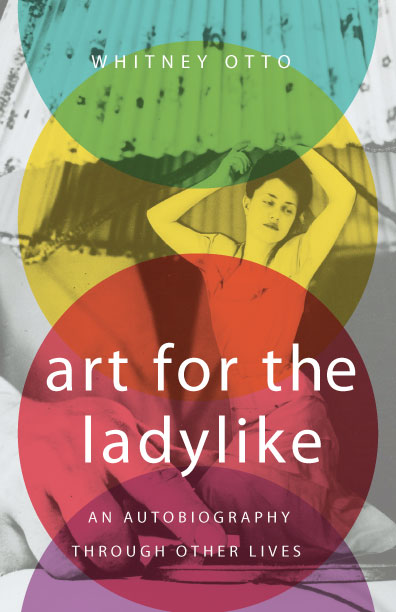Art for the Ladylike An Autobiography Through Other Lives
“Whitney Otto has woven a work of breathtaking texture. Art for the Ladylike is a love letter to the resilience and beauty of women who deign to make art. This book brought me back to myself.” — Lidia Yuknavitch
“A fascinating and peripatetic memoir, Whitney Otto’s fearless, free-range narrative investigates parenting, class, sexuality, and worlds beyond. Startling, funny, and compassionate—reminiscent of Rilke’s Letters to a Young Poet—this is an invaluable guide to the life of the mind and the soul of an artist.” —Diana Abu-Jaber
In this inviting blend of biography and memoir, novelist Otto (How to Make an American Quilt) examines her life in terms of the women artists who influenced her, asking, “Is there any social effect when a woman is explicit in her observing?” She starts with photographer Sally Mann, whose controversial photos of her children (sometimes nude) grew out of a summer vacation: “Kids are careless early chapters that only adults see as stories they mistakenly believe they can write,” Otto reflects. The author asks “why did I fall so hard” for the work of Madame Yevonde, a color photographer from the 1930s when color was considered “lesser” and feminine, concluding she “is exactly my kind of feminist.” A chapter on “quintessential Bad Girl” Lee Miller has Otto ruminating on familial gender roles: “why is it that a traditional heart can still beat in the wildest girl,” Otto asks. While there are a few unconvincing claims—that Humbert Humbert “loved” Lolita, for example—Otto provides a fascinating tour of art through the lens of her own experience. Creatives of all sorts will enjoy Otto’s wide-ranging insights. —Publishers Weekly
Summary
In Art for the Ladylike, Whitney Otto limns the lives of eight pioneering women photographers—Sally Mann, Imogen Cunningham, Judy Dater, Ruth Orkin, Tina Modotti, Lee Miller, Madame Yvonne, and Grete Stern— to in turn excavate her own writer’s life. The result is an affecting exploration of what it means to be a woman, what it means to be an artist, and the perils and rewards of being both at once. In considering how feminism, career, and motherhood were entangled throughout her subjects’ lives as they tirelessly sought to render their visions and paved the way for others creating within the bounds of domesticity, Otto assesses her own struggles with balancing writing and the pulls of home life. Ultimately, she ponders the persistent question that artistic women face in a world that devalues women’s ambition: If what we love is what we are, how do those of us with multiple loves forge lives with room for everything?
